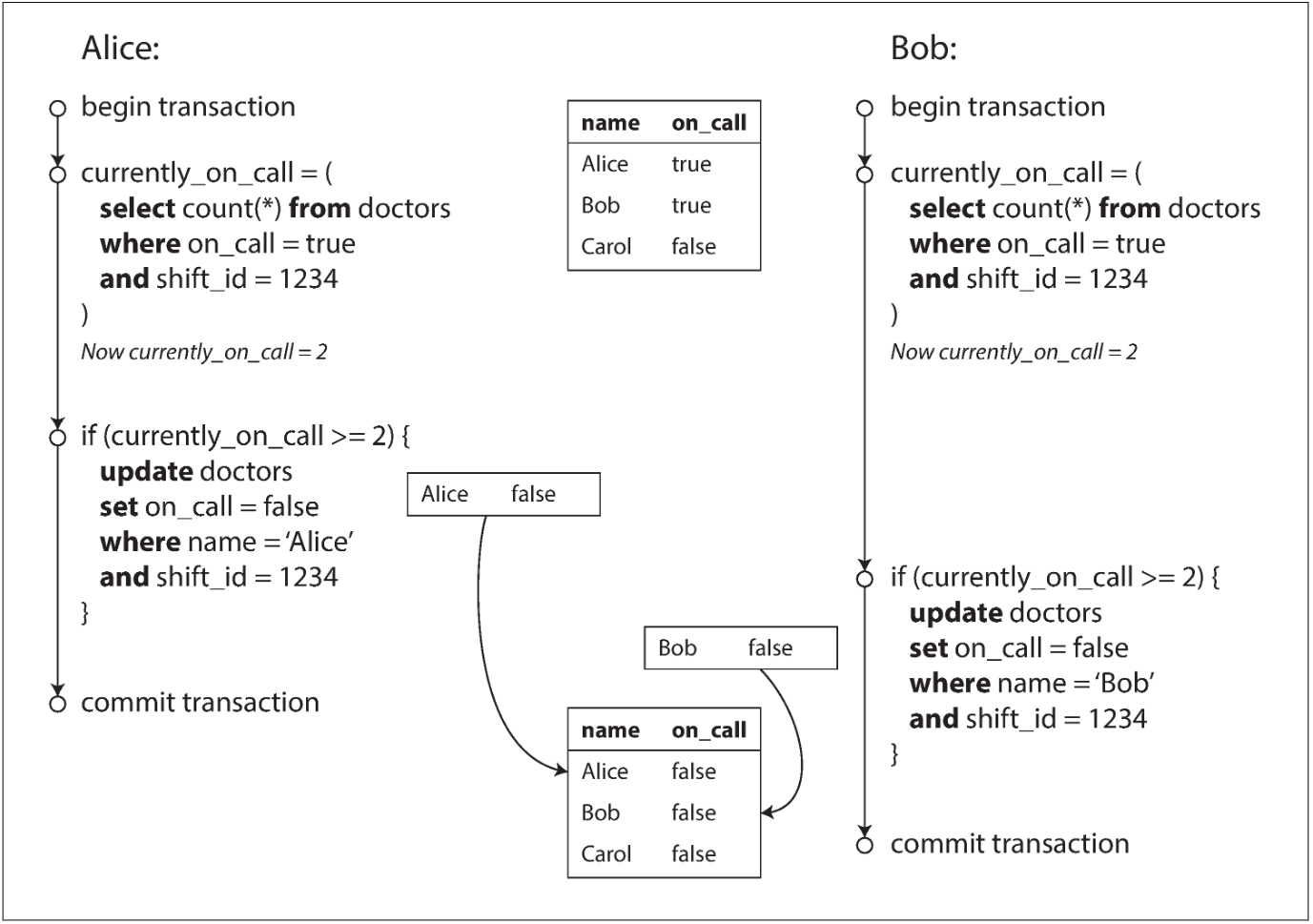Non-Repeatable Read
A non-repeatable read occurs, when during the course of a transaction, a row is retrieved twice and the values within the row differ between reads.
Phantom Read
A phantom read occurs when, in the course of a transaction, two identical queries are executed, and the collection of rows returned by the second query is different from the first.
Read Skew
Read skew is that with two different queries, a transaction reads inconsistent data because between the 1st and 2nd queries, other transactions insert, update or delete data and commit. Finally, an inconsistent result is produced by the inconsistent data.
Non-Repeatable Read vs Phantom Read
Non-repeatable reads are when your transaction reads committed UPDATES from another transaction. The same row now has different values than it did when your transaction began.
Phantom reads are similar but when reading from committed INSERTS and/or DELETES from another transaction. There are new rows or rows that have disappeared since you began the transaction.
- 不可重复读:两次相同的查询前后同一条记录的值不同。
- 幻读:两次相同的查询前后同一个范围内的记录数量不同。
Non-Repeatable Read vs Read Skew
We have two data - let x and y, and there is a relation between them.(e.g parent/child)
Transaction T1 reads x, and then a second transaction T2 updates x and y to new values and commits. If now T1 reads y, it may see an inconsistent state, and therefore produce an inconsistent state as output.
Acceptable consistent states:
- x and y
- x andy
Note: * denotes the updated value of the variable
When x and y are the same data, it leads to the problem of non-repeatable.
We may call read skew is a generalization form of a non-repeatable problem.
Lost Updates
由于未提交事务之间看不到对方的修改,因此都以一个旧前提去更新同一个数据,导致最后的提交结果是错误值。
假设有支付宝账户X,余额100元,事务A、B同时向X分别充值10元、20元,最后结果应该为130元,但是由于丢失更新,最后是110元。

Write Skew
当前事务之间看不到并发事务对数据的修改,以一个旧前提去更新数据,最后导致了数据状态的不一致。

Lost Updates vs Write Skew
丢失更新与写偏斜很相似,都是由于写前提被改变,他们区别是:
- 丢失更新是在同一个数据的最终不一致。
- 写偏斜的冲突不在同一个数据,在不同数据中的最终不一致。